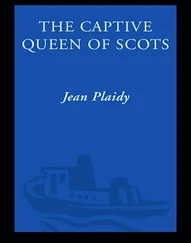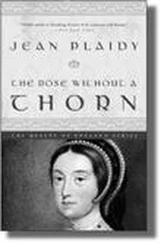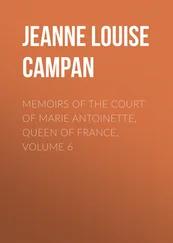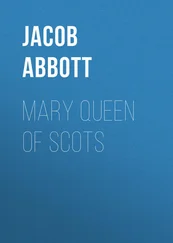Henry Bell - Life of Mary Queen of Scots, Volume 1 (of 2)
Здесь есть возможность читать онлайн «Henry Bell - Life of Mary Queen of Scots, Volume 1 (of 2)» — ознакомительный отрывок электронной книги совершенно бесплатно, а после прочтения отрывка купить полную версию. В некоторых случаях можно слушать аудио, скачать через торрент в формате fb2 и присутствует краткое содержание. Жанр: foreign_antique, foreign_prose, на английском языке. Описание произведения, (предисловие) а так же отзывы посетителей доступны на портале библиотеки ЛибКат.
- Название:Life of Mary Queen of Scots, Volume 1 (of 2)
- Автор:
- Жанр:
- Год:неизвестен
- ISBN:нет данных
- Рейтинг книги:5 / 5. Голосов: 1
-
Избранное:Добавить в избранное
- Отзывы:
-
Ваша оценка:
- 100
- 1
- 2
- 3
- 4
- 5
Life of Mary Queen of Scots, Volume 1 (of 2): краткое содержание, описание и аннотация
Предлагаем к чтению аннотацию, описание, краткое содержание или предисловие (зависит от того, что написал сам автор книги «Life of Mary Queen of Scots, Volume 1 (of 2)»). Если вы не нашли необходимую информацию о книге — напишите в комментариях, мы постараемся отыскать её.
Life of Mary Queen of Scots, Volume 1 (of 2) — читать онлайн ознакомительный отрывок
Ниже представлен текст книги, разбитый по страницам. Система сохранения места последней прочитанной страницы, позволяет с удобством читать онлайн бесплатно книгу «Life of Mary Queen of Scots, Volume 1 (of 2)», без необходимости каждый раз заново искать на чём Вы остановились. Поставьте закладку, и сможете в любой момент перейти на страницу, на которой закончили чтение.
Интервал:
Закладка:
Far, however, from obtaining by these violent measures, the ultimate object of his desires, Somerset found himself farther from his point than ever. The Scotch, enraged against England, threw themselves into the arms of France; and the Protector, understanding that affairs in the south had fallen into confusion, in his absence, was obliged to return home, leaving strong garrisons in Haddington, and one or two other places, which he had captured. The Earl of Arran, and Mary of Guise, sent immediate intelligence to Henry II., of all that had taken place; and, sanctioned by the Scottish Parliament, offered to conclude a treaty of marriage between his infant son, the Dauphin Francis, and the young Scottish Queen. They, moreover, agreed to send Mary into France, to be educated at the French Court, until such time as the nuptials could be solemnized. This proposal was every way acceptable to Henry, who, like his father Francis, perfectly understood the importance of a close alliance with Scotland, as the most efficient means for preventing the English from invading his own dominions. He sent over an army of 6000 men, to the aid of the Regent; and in the same vessels, which brought these troops, Mary was conveyed from Dumbarton into France. Henry also, with much sound policy, in order to strengthen his interests in Scotland, bestowed, about this time, upon the Earl of Arran, the title of the Duke of Chatelherault, together with a pension of some value. During a period of two years, a continual series of skirmishings were carried on between the Scotch, supported by their French allies, and the English; but without any results of much consequence on either side. In 1550, a general peace was concluded; and the marriage of the Scottish Queen was never afterwards made the ground of war between the two countries.
From this period, till Mary’s return to her own country, the attention of Scotland was entirely engrossed with its own affairs, and the various important events connected with the rise, progress, and establishment of the Reformation. As these effected no slight change in the political aspect of the country, and exercised a material influence over Mary’s future destiny, it will be proper to give some account of them in this place; and these details being previously gone through, the narrative, in so far as regards Queen Mary, will thus be preserved unbroken.
CHAPTER II.
SCOTLAND AND THE SCOTTISH REFORMERS, UNDER THE REGENCY OF THE QUEEN-DOWAGER
It was in the year 1517, that Luther first stated his objections to the validity of the indulgences granted so liberally by Pope Leo X. From this year, those who love to trace causes to their origin, date the epoch of the Reformation. It was not, however, till a considerably later period, that the new doctrines took any deep root in Scotland. In 1552, the Duke of Chatelherault, wearied with the fatigues of Government, and provoked at the opposition he was continually meeting with, resigned the regency in favour of the Queen-mother. Mary of Guise, by a visit she had shortly before paid to the French Court, had paved the way for this accession of power. Her brothers, the Duke of Guise and Cardinal of Lorraine, were far from being satisfied with the state of parties in Scotland. Chatelherault, they knew to be of a weak and fluctuating disposition; and it seemed to them necessary, both for the preservation of the ancient religion, and to secure the allegiance of the country to their niece, the young Queen, that a stronger hand, guided by a sounder head, should hold the reigns of the State. Upon their sister’s fidelity they knew they could depend; and it was principally through the influence of French gold and French intrigue, that she was placed in the regency.
The inhabitants of Scotland were at this time divided into two great classes, – those who were still staunch to the Church of Rome, and those who were determined on effecting a reformation. At the head of the former was John Hamilton, Archbishop of St Andrews, who, upon the murder of Cardinal Beaton, had obtained that appointment through the Duke of Chatelherault, whose natural brother he was. He was greatly the Duke’s superior in courage and sagacity, and was deeply imbued with the prelatical spirit of ambition then so prevalent. The resignation of the regency provoked him exceedingly, the more especially as Mary, to strengthen her own authority, found it necessary at first to treat the Reformers mildly. He was consoled, however, by the death of Edward VI. in 1553, and the accession of the young King’s eldest sister Mary to the English throne, – as bigoted and determined a Catholic as ever lived.
The man who had placed himself at the head of the Reformers, and who, although young, had already given Hamilton and his party good cause to tremble at his increasing authority, was James Stuart, the eldest of Mary’s three illegitimate brothers, – and one who occupies a most important station in the history of his country. His father made him, when only seven years old, Prior or Commendator of St Andrews, an office which entitled him, though a layman, to the full income arising from that rich benefice. It was soon discovered, however, that he had views far beyond so comparatively humble a rank. Even when a boy, it was his ambition to collect around him associates who were devoted to his service and desires. He went over with Mary to France in 1548, but remained there only a very short time; and, at the age of twenty-one, he was already looked up to by the Scottish Reformers as their chief. His knowledge was extensive, and considerably in advance of the times in which he lived. His personal bravery was undoubted, and his skill in arms so great, that few of his military enterprises were unsuccessful. His passions, if they were strong, seem also to have been deep, and entirely under his own command. Whatever may be thought of the secret motives which actuated him, he was seldom betrayed into any symptoms of apparent violence. He thus contrived to hold a steady course, amidst all the turbulence and convulsions of the age in which he lived; whilst the external decorum and propriety of his manners, so different from the ill-concealed dissoluteness of many of his cotemporaries, endeared him the more to the stern followers of Luther. It is curious to observe the very opposite views which different historians have taken of his character, more especially when they come to speak of him as the Earl of Murray and the Regent of Scotland. It would be improper and unnecessary to anticipate these discussions at present, since it is hoped the reader will be able to form his own estimate upon this subject, from the facts he will find recorded in these Memoirs.
It must be evident, that with two such men, each at the head of his own party, the country was not likely to continue long in a state of quietness. The Queen Regent soon found it necessary, at the instigation of the French Court, to associate herself with the Archbishop of St Andrews, – in opposition to which coalition, a bond was drawn up in 1557, by some of the principal Reformers, in which they announced their resolution to form an independent congregation of their own, and to separate themselves entirely from the “congregation of Satan, with all the superstitious abomination and idolatry thereof.” Articles, or Heads of a Reformation, were soon afterwards published, in which it was principally insisted, that on Sunday and other festival days, the Common-Prayer should be read openly in the parish churches, along with the lessons of the Old and New Testaments; and that preaching and interpretation of the Scriptures in private houses should be allowed.
In the following year, one of the first outrages which the Reformers committed in Scotland, took place in Edinburgh. On occasion of the annual procession through the city, in honour of the tutelar Saint – St Giles, the image of that illustrious personage, which ought to have been carried by some of the priests, was amissing, – the godly having, beforehand, according to John Knox, first drowned the idol in the North Loch, and then burned it. It was therefore necessary to borrow a smaller saint from the Gray-Friars, in order that this “great solemnity and manifest abomination” might proceed. Upon the day appointed, priests, friars, canons, and “rotten Papists,” assembled, with tabors, trumpets, banners, and bagpipes. At this sight, the hearts of the brethren were wondrously inflamed; and they resolved, that this second dragon should suffer the fate of the first. They broke in upon the procession; and though the Catholics made some slight resistance at first, they were soon obliged to surrender the image into the hands of the Philistines, who, taking it by the heels, and knocking, or, as the reformed historian says, dadding its head upon the pavement, soon reduced it to fragments, only regretting, that “the young St Giles” had not been so difficult to kill as his father. The priests, alarmed for their personal safety, sought shelter as quickly as possible, and gave Knox an opportunity of indulging in some of that austere mirth which is peculiarly remarkable, because so foreign to his general style. “Then might have been seen,” says he, “so sudden a fray as seldom has been seen among that sort of men within this realm; for down goes the cross, off go the surplices, round caps, and cornets with the crowns. The Gray-Friars gaped, the Black-Friars blew, and the priests panted and fled, and happy was he that first got the house; for such a sudden fray came never among the generation of Antichrist within this realm before.” The magistrates had some difficulty in prevailing upon the mob to disperse, after they had kept possession of the streets for several hours; and the rioters escaped without punishment; for “the brethren assembled themselves in such sort in companies, singing psalms, and praising God, that the proudest of the enemies were astounded.” 4 4 Keith, p. 68. – Knox’s History, p. 94-6.
Интервал:
Закладка:
Похожие книги на «Life of Mary Queen of Scots, Volume 1 (of 2)»
Представляем Вашему вниманию похожие книги на «Life of Mary Queen of Scots, Volume 1 (of 2)» списком для выбора. Мы отобрали схожую по названию и смыслу литературу в надежде предоставить читателям больше вариантов отыскать новые, интересные, ещё непрочитанные произведения.
Обсуждение, отзывы о книге «Life of Mary Queen of Scots, Volume 1 (of 2)» и просто собственные мнения читателей. Оставьте ваши комментарии, напишите, что Вы думаете о произведении, его смысле или главных героях. Укажите что конкретно понравилось, а что нет, и почему Вы так считаете.












